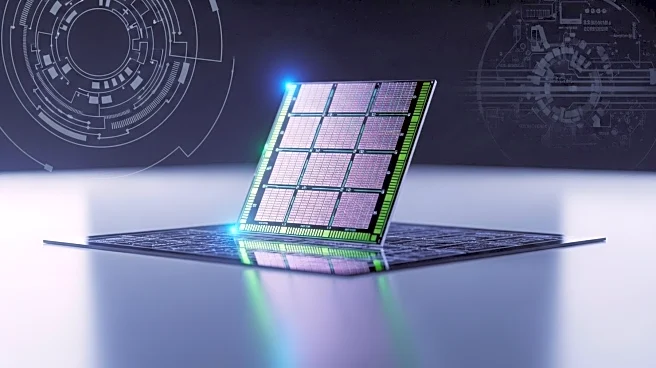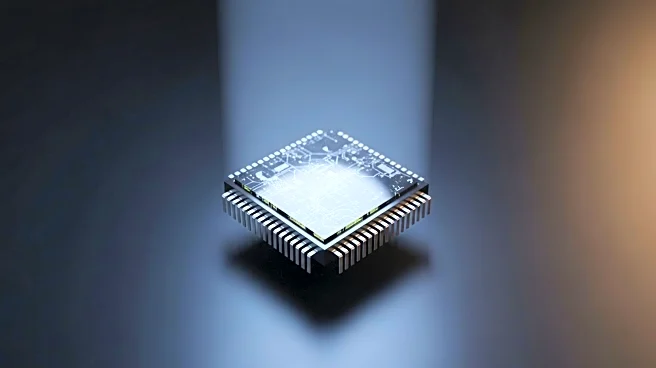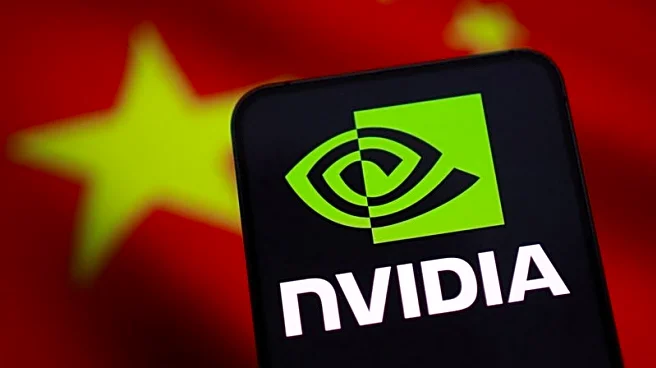What is the story about?
What's Happening?
In August 2025, the Trump administration acquired a 10% stake in Intel, making it the largest shareholder of the chipmaker. This move is part of a broader strategy to bolster national security and maintain competitiveness in the semiconductor industry, particularly against China. Intel, known for its microchip production, has faced challenges in recent years, falling behind competitors like TSMC and Samsung. The U.S. government’s investment, funded by grants from the CHIPS and Science Act, aims to support Intel’s efforts to regain leadership in high-end chip manufacturing. Despite the government’s lack of voting rights, Intel may experience political pressure due to this significant investment.
Why It's Important?
The U.S. government's stake in Intel is significant for national security and technological competitiveness. With 90% of advanced chips produced by TSMC in Taiwan, the U.S. aims to mitigate risks associated with foreign supply disruptions, especially amid geopolitical tensions. Supporting Intel could reduce dependency on foreign-made chips in critical systems, addressing concerns about potential vulnerabilities. This investment reflects a strategic effort to ensure the U.S. remains a key player in the global semiconductor market, which is crucial for various industries, including defense and technology.
What's Next?
The acquisition may lead to increased scrutiny and political influence over Intel’s operations. While the government does not have direct governance rights, Intel might face pressure to align with national security priorities. The company is expected to use the investment to expand and modernize its facilities, potentially enhancing its competitive edge. However, the involvement of the government could introduce inefficiencies and favoritism, impacting innovation. Stakeholders will closely monitor Intel’s performance and strategic decisions in the coming months.
AI Generated Content
Do you find this article useful?















